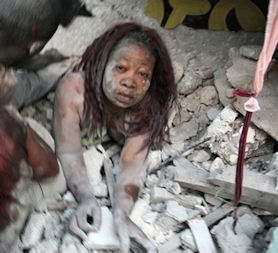Haiti earthquake: the rescue race
As rescue teams begin searching the rubble after a massive earthquake in Haiti, Julie Ryan from the International Rescue Corps tells Channel 4 News what the key phases are in the hunt for survivors.

What kind of help is most crucial at this stage?
The primary role at this stage is the search and rescue of people trapped following the quake.
Local infrastructure could begin this but that would depend on whether those services have survived the quake or not.
In the Columbian earthquake 1998, we found the remnants of the fire station with all the fire engines and firemen destroyed.
How quickly can teams and their equipment get to a scene like this one?
This depends where the earthquake is. Following an earthquake it is always difficult to get any communications as to the scale of the disaster.
The UN will usually undertake an assessment and then assist the affected country with what help is needed.
What is the “golden period” for getting to trapped people?
It is always better to get to an affected area within 24-48hrs following a quake.
This will increase the numbers that can be rescued alive. The longer the time goes on the less chance of anyone alive surviving diminishes.
However, it is known that people can survive being buried for several days. In Pakistan we rescued two small boys from a collapsed school five days after the earthquake hit. Both boys were completely unhurt.
Will sniffer dogs be used?
If sniffer dogs are available then almost definitely. We have worked over the years with several dog teams from all over the world and they are invaluable in finding people trapped within the rubble.
The US has mobilised rescue teams. Do you know how the UK will contribute?
Wherever a disaster hits it obviously depends on where the earthquake is and which rescue teams are nearer.
IRC will always put in an offer of assistance but it will depend very much on how and when the team can get to the affected country.
How does this compare to previous quake disasters?
This is obviously a massive earthquake which hit a very densely populated area.
Our experience is that there will be several fatalities and injuries. We hope that rescue teams are able to get to the affected area quickly.